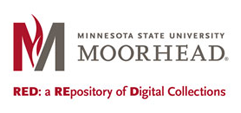Location
Comstock Memorial Union, MSUM
Document Type
Poster
Event Website
https://www.mnstate.edu/sac/
Start Date
23-4-2024 12:00 AM
Publication Date
April 2024
Description
After examination of the Equity Score card for Minnesota State University Moorhead (MSUM) in the Fall of 2023, it was determined that the largest equity gap is among Native American students (which was also representative of the data for the entire state of Minnesota). This research project used the information from the Campus Climate Survey (collected in Spring 2023) to develop a secondary survey that specifically targets Native American students to further supplement the data from the campus climate survey. According to the Minnesota State Equity Scorecard (2023), a 25.4% equity gap among Native American students was identified. This equity gap had widened over the last three years prior to 2023 and the Native American student success rate from fall to fall first year completion was 57. l %. This research project specifically targeted MSUM students who identify as Native American students on the MSUM campus to better identify the needs of this demographic of students. After identifying the needs of the students, we can better support Native American students on campus in hopes of closing the equity gap on campus. Thus, providing a welcoming campus climate and providing pathways to success to native students. The survey of indigenous students achieved a 40.3% completion rate of the total population of indigenous students at MSUM. The findings of this study revealed the academic, cultural, and health needs of the indigenous students who participated in the survey. The data analysis indicated the following results: (1) The indigenous student population predominately identifies as non-traditional and working class; (2) symptoms of anxiety and depression were high with noted perceptions that higher education had a significant influence on individual mental health; (3) indigenous students at MSUM were more likely to note additional education barriers (such as financial, mental health, family obligations, no sense of belonging) that affected their education; (4) students self-disclosed terms for their identities varied and included: mixed or ;multiple races which potentially skews institutional data to not represent the larger number of students with indigenous identity; and (5) the back needs of indigenous students were not being met, which ultimately led to higher instances of students showing signs of trauma. [JCA1] The results of this study can be used to address the current gaps in the statistics that often "other" the indigenous student voices that have been noted as "lack of sample size." The voices of this survey can help to further expose why the equity gap is the largest among Native American students, but also help educators/institutions to identify ways they can provide more support.
Included in
The MSUM Native American Student Needs Survey
Comstock Memorial Union, MSUM
After examination of the Equity Score card for Minnesota State University Moorhead (MSUM) in the Fall of 2023, it was determined that the largest equity gap is among Native American students (which was also representative of the data for the entire state of Minnesota). This research project used the information from the Campus Climate Survey (collected in Spring 2023) to develop a secondary survey that specifically targets Native American students to further supplement the data from the campus climate survey. According to the Minnesota State Equity Scorecard (2023), a 25.4% equity gap among Native American students was identified. This equity gap had widened over the last three years prior to 2023 and the Native American student success rate from fall to fall first year completion was 57. l %. This research project specifically targeted MSUM students who identify as Native American students on the MSUM campus to better identify the needs of this demographic of students. After identifying the needs of the students, we can better support Native American students on campus in hopes of closing the equity gap on campus. Thus, providing a welcoming campus climate and providing pathways to success to native students. The survey of indigenous students achieved a 40.3% completion rate of the total population of indigenous students at MSUM. The findings of this study revealed the academic, cultural, and health needs of the indigenous students who participated in the survey. The data analysis indicated the following results: (1) The indigenous student population predominately identifies as non-traditional and working class; (2) symptoms of anxiety and depression were high with noted perceptions that higher education had a significant influence on individual mental health; (3) indigenous students at MSUM were more likely to note additional education barriers (such as financial, mental health, family obligations, no sense of belonging) that affected their education; (4) students self-disclosed terms for their identities varied and included: mixed or ;multiple races which potentially skews institutional data to not represent the larger number of students with indigenous identity; and (5) the back needs of indigenous students were not being met, which ultimately led to higher instances of students showing signs of trauma. [JCA1] The results of this study can be used to address the current gaps in the statistics that often "other" the indigenous student voices that have been noted as "lack of sample size." The voices of this survey can help to further expose why the equity gap is the largest among Native American students, but also help educators/institutions to identify ways they can provide more support.
https://red.mnstate.edu/sac/2024/cehs/14

